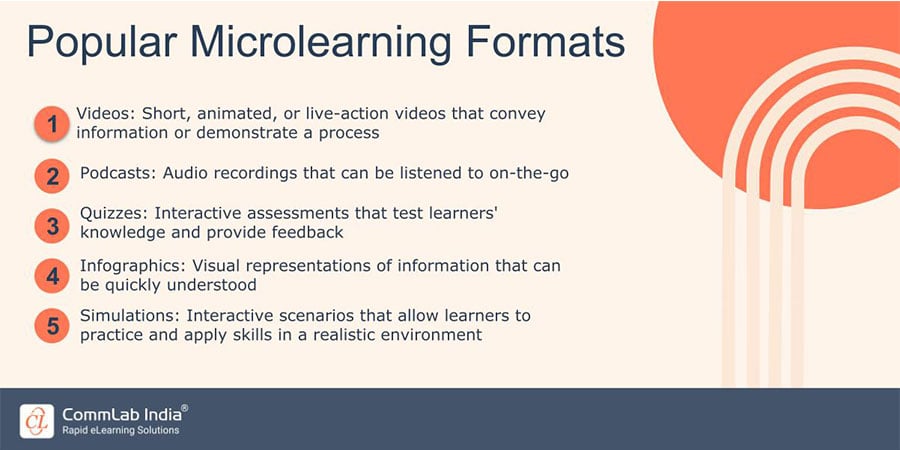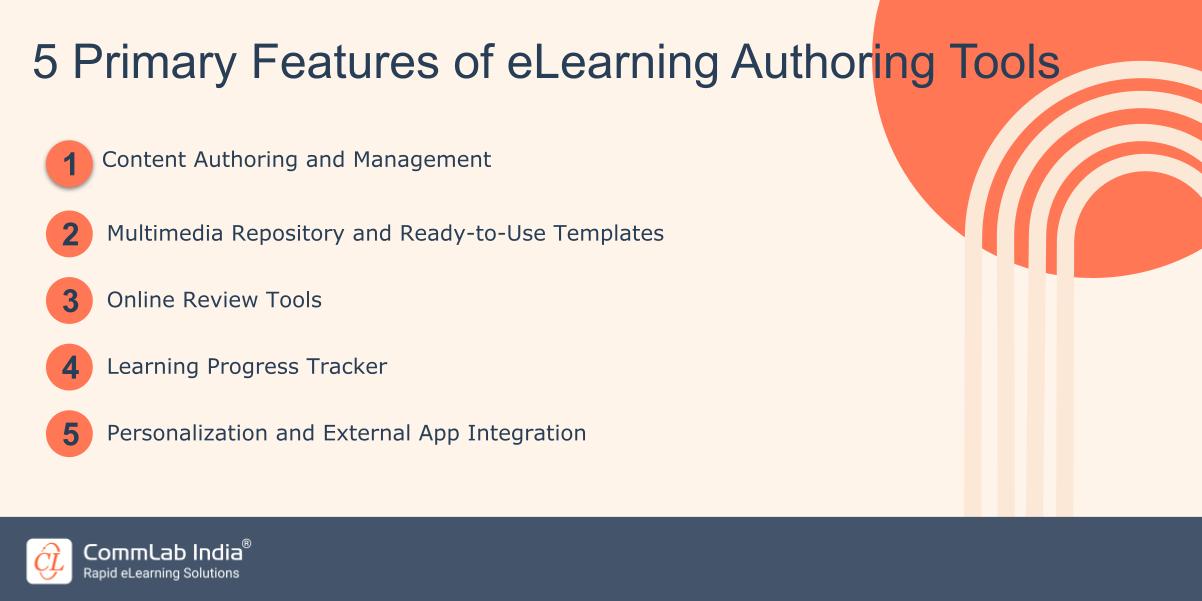Elevating Learner Engagement: Unveiling Custom eLearning's Transformative Trends

In the digital age, the effectiveness of eLearning is intricately tied to learner engagement. Engaged learners are more likely to absorb and retain information, making it imperative for eLearning programs to constantly evolve and incorporate strategies to captivate and involve learners. In this blog post, we will explore the world of custom eLearning and understand how it goes beyond the one-size-fits-all approach, offering personalized and tailored learning experiences. Let’s investigate the trends that are currently shaping the eLearning landscape, all with the aim of enhancing learner engagement.
Trying to Enhance Learner Engagement? Try Custom eLearning!
Here are a few trends to follow -
- Gamification
- Microlearning
- VR and AR
- AI and Personalized Learning
What are the Current Custom eLearning Trends in 2024?
1. Gamification
Gamification is a powerful trend in custom eLearning that leverages elements of game design to make learning more engaging and enjoyable. In essence, it introduces game-like features such as points, badges, leaderboards, and challenges into the learning experience. This approach taps into the innate human desire for competition and achievement, motivating learners to actively participate and progress. Gamification not only makes learning fun but also provides instant feedback and rewards, reinforcing positive behaviors and boosting engagement.
For example, a language learning app might incorporate a feature where learners earn points for every correct answer, receive virtual badges for reaching milestones, and can compete with other learners on a leaderboard. These elements create a sense of accomplishment and encourage learners to continue their training with enthusiasm.
→ Download Infographic Now: Custom eLearning
2. Microlearning
Microlearning is a trend that focuses on delivering content in short, bite-sized, and easily digestible modules. It's designed to fit into the busy lives of modern learners, providing them with quick and focused learning opportunities. The rationale behind microlearning is that shorter, targeted lessons are more engaging and better suited to today's shorter attention spans. Here are a few popular microlearning formats -

For instance, instead of sitting through a lengthy hour-long lecture, microlearning might break that content into a series of 5 to 10-minute modules, each covering a specific topic or skill. This approach allows learners to absorb information in smaller increments, making it easier to stay engaged and retain knowledge. Moreover, microlearning is accessible on various devices, enabling learners to fit their training into their schedules.
3. Virtual Reality (VR) and Augmented Reality (AR)
Virtual Reality (VR) and Augmented Reality (AR) technologies are transforming the landscape of custom eLearning. VR immerses learners in a completely virtual environment, while AR overlays digital elements onto the real world. These technologies enable learners to experience scenarios and simulations, enhancing engagement and experiential learning.
In custom eLearning, VR might be used to create realistic simulations for training, allowing learners to practice skills in a safe virtual environment. AR can overlay interactive information onto real-life objects or scenarios, enriching learning experiences. For instance, a medical student could use AR to explore 3D models of the human body during a lecture, enhancing their understanding of anatomy.
4. AI and Personalized Learning
Artificial Intelligence (AI) is a key driver of personalized learning in custom eLearning. AI algorithms analyze learner data and behaviors to provide personalized content recommendations and adapt the learning path according to individual progress. This level of customization is particularly effective in maintaining learner engagement.
For instance, an AI-powered eLearning platform can track a learner's performance and preferences and then suggest additional resources or exercises based on their strengths and weaknesses. By tailoring the content to the learner's needs, AI ensures that learners are neither overwhelmed nor bored, resulting in a more engaging and effective learning experience.
Implementing Custom eLearning
A. Steps to Create Custom eLearning Content
- Needs Analysis: Start by identifying the specific learning needs and objectives. Understand the target audience, their goals, and any existing knowledge gaps. This analysis forms the foundation of your customized content.
- Content Development: Develop the actual eLearning content, keeping the identified needs in mind. This may include creating multimedia presentations, videos, quizzes, or interactive modules. Content should be engaging, relevant, and aligned with the learning objectives.
- Assessment and Feedback: Implement formative and summative assessments to evaluate learners' progress and understanding. Offer immediate feedback to reinforce learning and provide guidance for improvement.
B. Tools and Resources for Custom eLearning
- Learning Management Systems (LMS): LMS platforms provide a centralized space for content delivery, learner management, and assessment. Popular LMS options include Moodle, Canvas, and Blackboard.
- eLearning Authoring Tools: eLearning Authoring tools like Articulate Storyline, Adobe Captivate, and Lectora enable the creation of interactive and customized eLearning content without extensive programming knowledge.

- Multimedia Creation Software: Tools like Adobe Creative Cloud and Canva help in developing engaging visuals, animations, and videos for eLearning content.
- Learning Analytics: Utilize learning analytics tools to track learner progress, assess engagement, and make data-driven improvements to your eLearning courses.
Measuring Learner Engagement from Custom eLearning
Measuring learner engagement is a critical aspect of ensuring the effectiveness of your custom eLearning initiatives. By understanding how engaged learners are, you can make data-driven decisions to enhance their experience. There are several key performance indicators (KPIs) and assessment methods you can employ for this purpose.
One of the primary KPIs is the completion rate, which tells you the percentage of learners who successfully finish a course or module. This metric provides insights into the overall engagement and commitment of your audience. Tracking the time learners spend on specific content also reveals their level of interest and engagement. Quiz and assessment scores are excellent indicators of how well learners are absorbing the material, as they reflect their understanding and knowledge retention.
In addition to these KPIs, participation in online discussions and forums can be a valuable metric. Engaged learners tend to actively contribute to discussions, share ideas, and seek clarification when needed. Moreover, feedback and surveys can provide qualitative insights into the learner experience. Collecting feedback directly from your audience helps you better understand their satisfaction, engagement levels, and areas for improvement.
To measure engagement effectively, consider employing learning analytics platforms, surveys, questionnaires, observations, and focus groups. These assessment methods, when used in tandem with KPIs, offer a comprehensive view of learner engagement and can guide you in optimizing your custom eLearning strategies for the best outcomes. Here is a short video to help you understand the role learning analytics plays in measuring training engagement and effectiveness.
Parting Thoughts!
In conclusion, custom eLearning has emerged as a pivotal force in revolutionizing online training, addressing the challenges of passive learning and disengagement. By personalizing content, making it interactive, and providing real-world applications, eLearning can become a dynamic and effective platform for knowledge acquisition and skill development. To add up to the blog, here’s a comprehensive infographic about custom eLearning, for you to keep as a just-in-time knowledge asset.


![Custom eLearning — How it Can Offer Personalized Learning Experiences [Infographic]](https://no-cache.hubspot.com/cta/default/59327/1353ae98-9928-439e-848a-c80f513a72dc.png)

![Leveraging AR/VR Technology in eLearning [5 Best Ways + Advantages + Disadvantages]](https://blog.commlabindia.com/hubfs/Imported_Blog_Media/Leveraging-ARVR-Technology-in-eLearning-5-Best-Ways-Advantages-Disadvantages.jpg)
